Disclosure: Meeple Mountain received a free copy of this product in exchange for an honest, unbiased review. This review is not intended to be an endorsement.
The Mystery Inc. gang step out of the van and look around. There’s something odd about the area, strange-looking figures have been spotted moving about in the dark, rumours abound about something supernatural happening at the old museum. Or was it the fairground? Or the swamp? To be honest the rumours aren’t all that specific but who cares when the gang can practically taste the start of their next adventure. It’s time to split up and look for clues around what may or may not be a mysterious mansion!
Betrayal at Mystery Mansion is the latest instalment in the Betrayal series of board games from Avalon Hill, this time themed around the classic cartoon series Scooby-Doo and designed for 3-5 players aged 8 and up.
Betrayal games are characterised by their two distinct halves – Exploration and the Haunt. Mystery Mansion is no different: in the first half of the game players explore the titular mansion and surrounding area; in the second half one of the players takes on the role of the scenario’s monster and everyone else tries to uncover their dastardly plans and stop them.
Alright, Gang, Let’s Split Up and Search for Clues
Before starting each player chooses one of the five iconic Scooby-Doo characters: Fred, Daphne, Velma, Shaggy and Scooby-Doo (thankfully Scrappy-Doo isn’t invited). Each character comes with a board with tracks determining their attributes: Might, Brains, Speed and Courage. Each character has a slightly different set of starting values for these traits, along with a special ability.
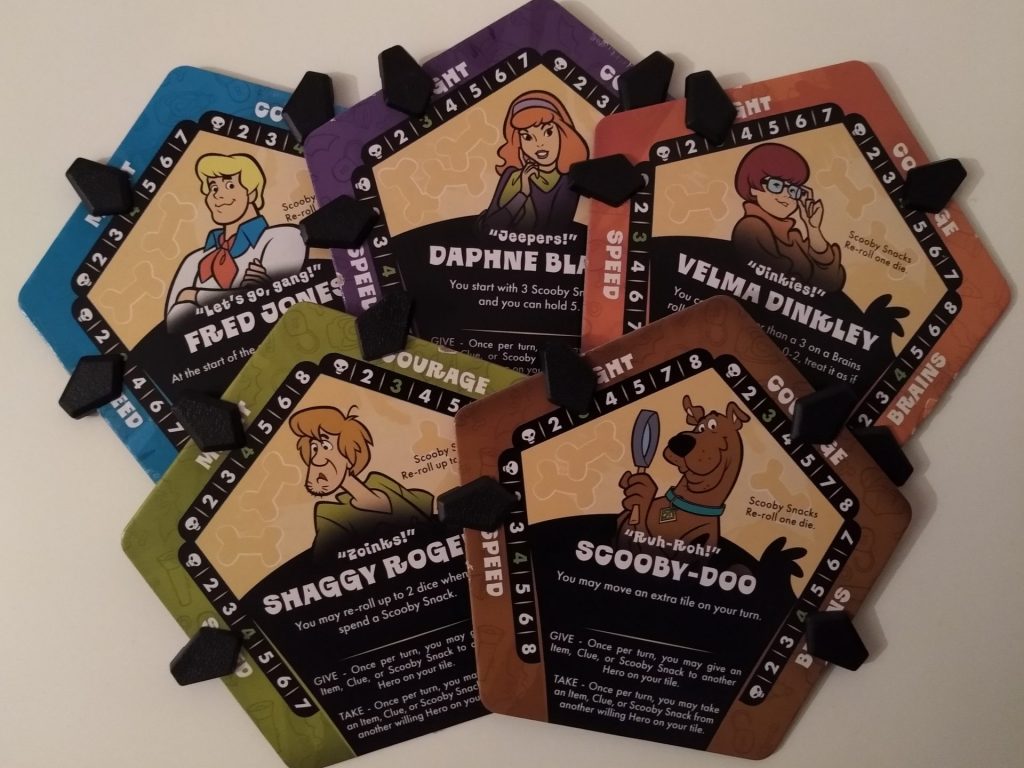
At the start of the game one of the five Mystery cards is selected and read aloud. This is the way Mystery Mansion determines which Haunt you’ll be playing (each card leads to five different Haunts) and the card text sets the scene before the game begins. The cards are ranked in terms of difficulty from ‘Easiest To Learn’ to ‘Most Involved’ so you can adjust the accessibility of the game if you’re playing with younger or new players.
The game starts with the gang by their van at the front of the mysterious mansion. Players take turns moving from tile to tile, discovering locations by revealing new tiles and adding them to the growing floor plans of the house and estate. Each tile when revealed lets the player take an Item, Event or Clue card, many of which will increase or decrease one of the owner’s four attributes.

The Item and Event cards are fairly self-explanatory but the Clue cards are a little different and act as a randomised timer for the Exploration phase of the game. From the third Clue card onwards the player whose turn it is rolls a number of dice equivalent to the number of clues discovered. Each die has values from 0 to 2 and on a roll of 5 or greater the Haunt begins. Finding out which Haunt you are playing is simple: look at the back of the Mystery card and cross-check it against the Clue card that triggered the Haunt.
Zoinks! A Monster!
Up until now you’ve just been casually exploring a house and surrounding area, a hint of creepy locale cut nicely with some daft humour on the various cards and tile artwork. With the Haunt, however, comes a dollop of narrative and suddenly you’ve got a purpose. What that purpose is will depend on whether you remain a hero or volunteer to be the monster.
The heroes’ ‘Secrets of Survival’ booklet provides more information about what’s happening, how to set up the Haunt and what the heroes need to do to win. Distilled down to its most basic it gives the players a goal they need to achieve and some additional actions they can perform to do it. Frequently the goal will be something along the lines of stun the monster, move items to specific places or survive long enough.
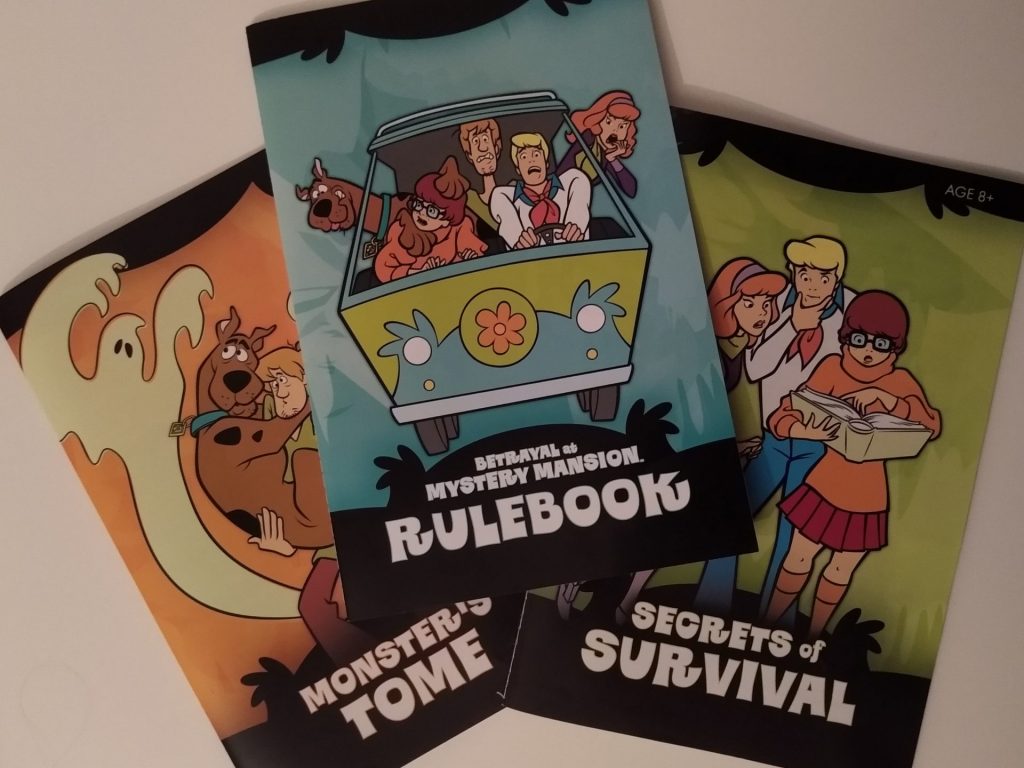
As the monster you get the ‘Monster’s Tome’ booklet where you’ll discover who you are, what’s really happening and what you need to do to win. In the original Betrayal game one of the characters turns traitor on their friends (hence ‘betrayal’). Mystery Mansion’s narrative does something kinder and instead the monster’s former Mystery Inc. character ‘wanders off’ or ‘gets lost’, allowing the player to take on the role of the monster without tarnishing a cherished character’s reputation.
In another difference with the original game, who plays the monster can be decided by the group rather than having to be the person who triggered the Haunt. Both sides can also learn the Haunt together, helping younger or new players navigate the game, although the two sides can read their separate booklets secretly instead to keep that additional layer of suspense.
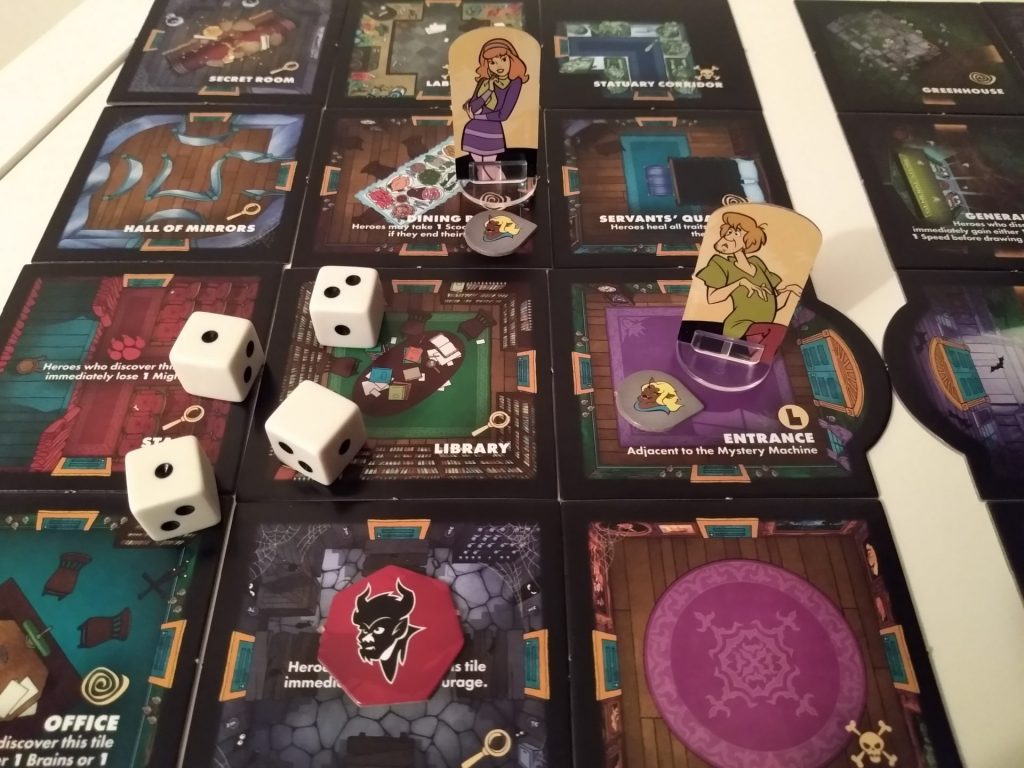
Once everyone is familiar with the new rules, the game recommences with both sides dashing about the map trying to achieve their objectives and potentially fighting each other along the way until someone meets their win condition. A final paragraph of text explains how the story – and the game – ends.
Looks Like We’ve Got Another Mystery On Our Hands
I’m going to come out and say it – Betrayal at Mystery Mansion is both a perfectly good game and a frustratingly missed opportunity.
The good first: Mystery Mansion is undeniably fun. From the artwork and card flavour text to the gameplay itself there’s a lightness and humour that sets this Betrayal game far apart from its predecessors. The stripped down rules streamline the experience so that whilst it’s a good game for younger players, it’s also less awkward and fiddly and as a result a more pleasant experience. The suggested minimum age range is appropriate, although I’m not sure how many groups of 8 year olds could handle everything themselves without an older player to steer things in the right direction.

There are nods to the series everywhere you look: most of the location tiles have little references to classic episodes, there are Scooby Snacks you can use to reroll dice, and cards that show Super Shaggy Sandwiches, Wheelbarrows or are simply titled ‘Boo!’. It doesn’t take much to get into the Scooby-Doo mood and when the Haunt starts there’s a sense of anticipation and excitement about what’s going to happen.
The Haunts themselves are the lifeblood of the game, injecting a much needed energy into the experience. The characters hotfoot it around the map like the chase scenes that occurred in every episode: monsters chasing heroes, heroes chasing monsters, heroes chasing themselves. Chances are you’ll laugh a lot and that’s a lovely thing for a game to be able to do. Randomness is high, frequently in a good way, leading to tense rolls and big, dumb waves of emotion. It’s all a bit chaotic and scrappy (pun intended), a frothy, fun but frequently frustrating experience.
Jeepers!
The trouble is there are minor issues almost everywhere you look. The Betrayal series is well known for flimsy components and Mystery Mansion is no different. The plastic clips on the character boards obscure the attribute names and are so tight they can damage the player boards. The thin cardboard makes moving or picking up the various tokens a challenge, especially if you’re trying not to knock location tiles out of place.

Whilst the Exploration phase is initially fun there are only 14 outside and 14 inside location tiles. After a couple of games it can start to feel like the same things in a slightly different order, ending up with an Exploration phase that is less a game and more a lengthy, turn-based set-up.
Additionally, with so few location tiles you’ll either find that you’ve explored pretty much everything in a single game or the Haunt has been triggered too early and one of the teams is going to have an impossible task ahead of them. A Haunt that tells you to put the tokens you need to collect as far away from the characters as possible becomes pitifully easy when that turns out to be three rooms away.
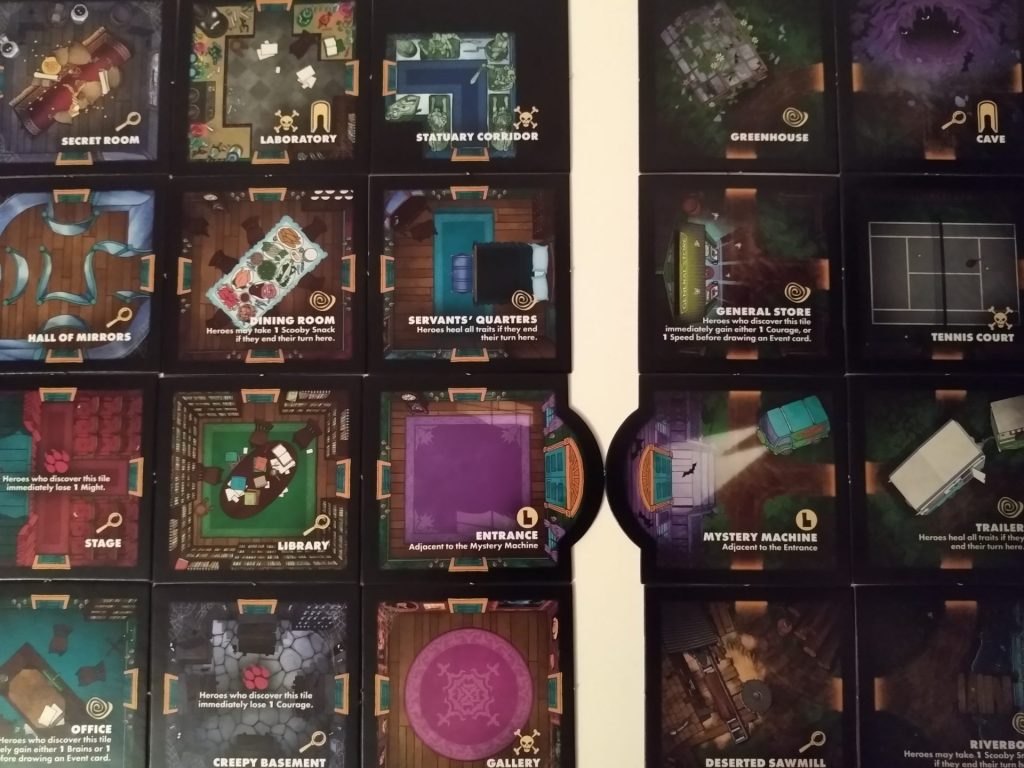
Many of these things are problems that are synonymous with the Betrayal series. In some ways they’re part of the charm and for the price point they’re absolutely forgivable – this is a solid Betrayal game suitable for younger players at a much reduced price. That in itself is impressive and it’s well worth a look if the concept or cartoon series appeal to you.
But whilst it’s good, Mystery Mansion is not a truly great game and it’s down to its use of theme and narrative.
Ruh-roh-RAGGY!!!
I’m British, but even on this side of the pond the classic episodes of Scooby-Doo were my favourite cartoons, as they were for many people around the world. Scooby-Doo is such a perfect fit for the Betrayal series that fans first came up with the idea 14 years ago, sharing their own character sheets and adapting the original game’s Haunts.
The trouble is how the narrative of the show has to work with the narrative of the original game. In the original game the backgrounds of the characters and the reasoning for the betrayal and Haunt doesn’t really matter (much like many B-movie horror films). But in Scooby-Doo each story has a setup, characters with motives and an ending. Sure, the viewer won’t necessarily know which of the handful of characters introduced is the villain but they’ll know that one of them is. They experience the solving of the case with the gang, albeit frequently one-step behind Velma.
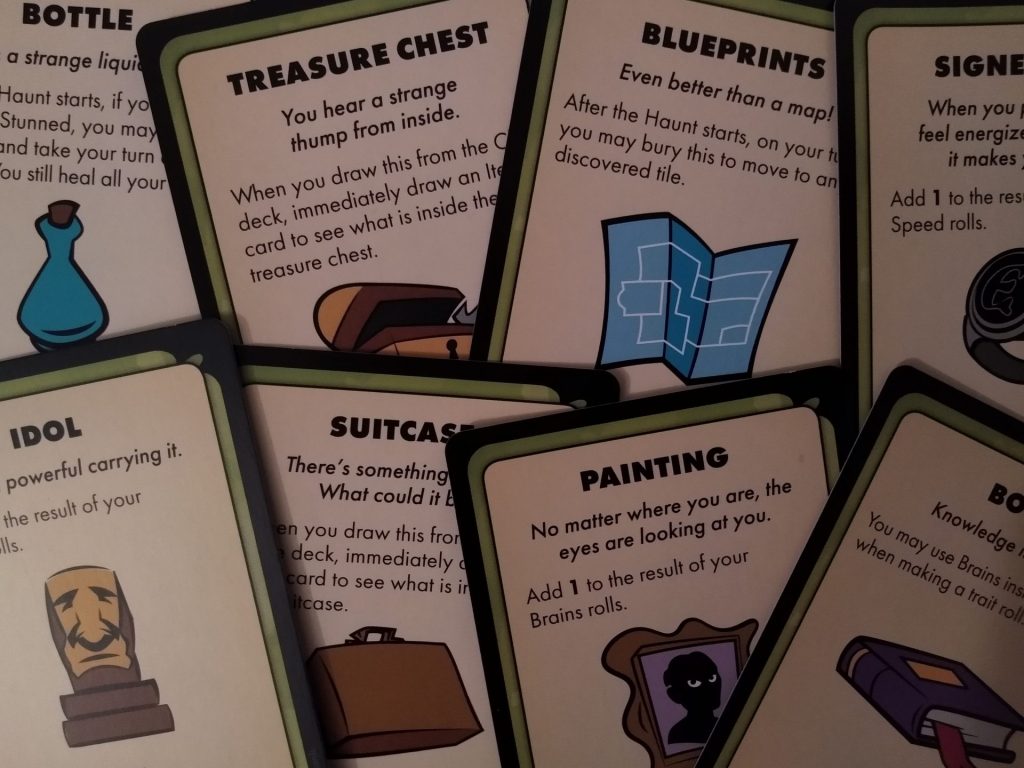
Mystery Mansion doesn’t cater to this – you’re playing Scooby-Doo like a mild horror as opposed to a mystery. The Clue cards that trigger specific Haunts are frequently unrelated to that Haunt, both in terms of the narrative and the ability the Clue card gives. In one Haunt the scene-setting paragraph opens with ‘This treasure chest…’ but the Clues that trigger that Haunt are ‘Stage Makeup’ and ‘Blueprints’. There is a ‘Treasure Chest’ Clue, but it doesn’t trigger that Haunt.
This thematic disconnect runs through the whole game. The Events cards are a great way of injecting some story points but all too often they lead with cold mechanics and provide a bare minimum of thematic text. You encounter ‘Bats!’ and make a Speed roll. There are three results on the card, depending on what you roll – Gain 1 Courage, Take 1 Damage or Lose 1 Brains. Only with the last result is there any indication of story – it simply says ‘Ahhhh!’. Whilst a few Events cards do have a story snippet for each option, more have no story at all. I could probably do a half-way decent job of adding story snippets to every Event card in under an hour, we’re not talking about a massive undertaking here. It’s a hugely thematic game that continually asks the players to do for the narrative what it can’t be bothered to do itself.
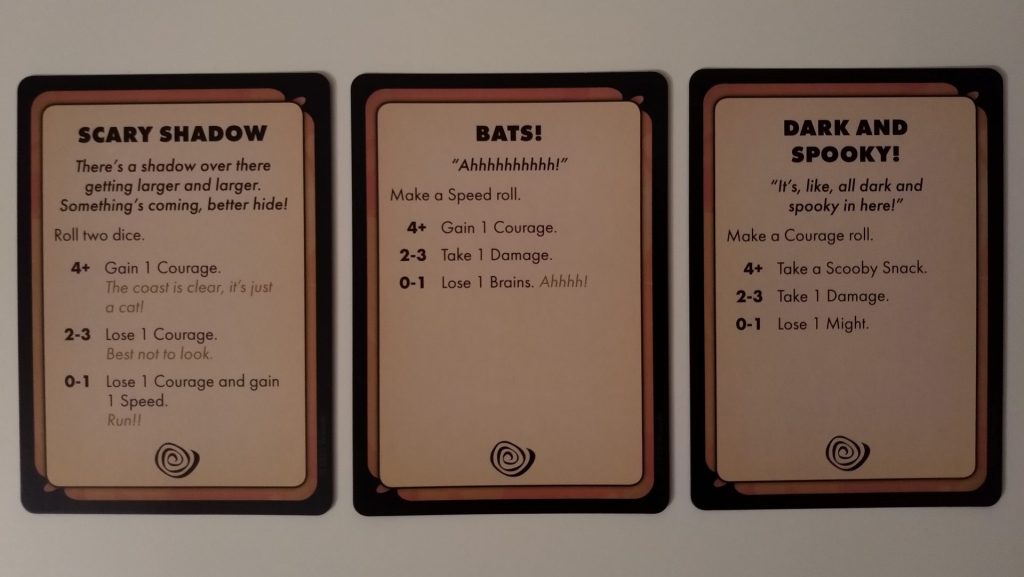
If the main plot of each scenario were better integrated or even told then these more minor narrative issues would slip into the background, but again the bare minimum of scene setting and storytelling has been done. You’ll get about 30 words of text on the Mystery card to set the scene, but this has to be broad to include references to all 5 possible Haunts on the card and is instantly forgotten. The original game didn’t need an introduction – the horror tropes and narrative set up was already strong, but Scooby-Doo needs that scene setting to sell the story and it’s lacking. Once the Haunt starts you’ll then get less than 100 words introducing the specific Haunt and finally about 50 words at the end of the game to describe the outcome of the Haunt. And it’s not just word count but content – these snippets are often vague and sometimes seem to assume that you’ll know the story from the title of the Haunt.
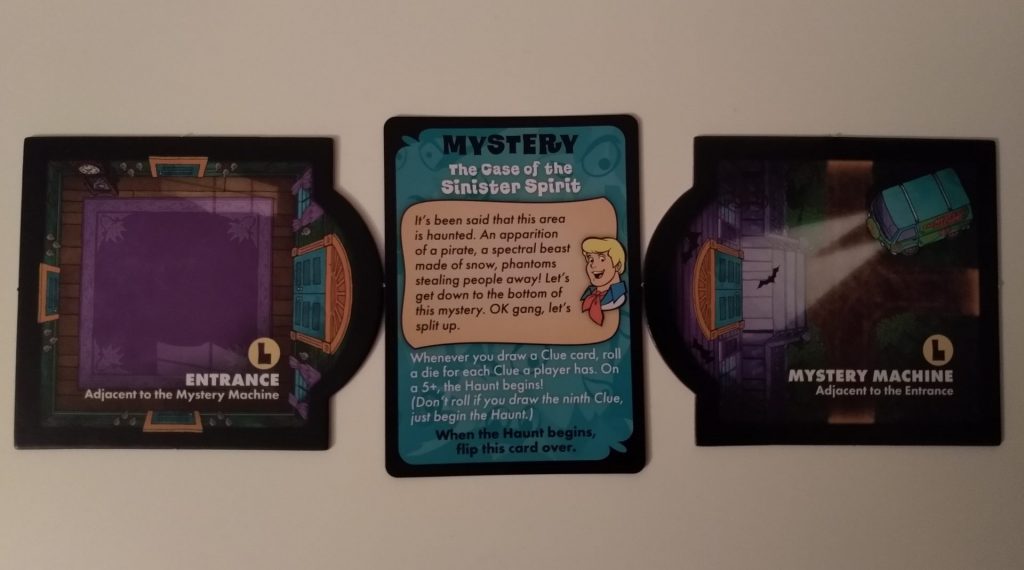
One of the fantastic things about Mystery Mansion is that it recreates classic episodes – each Haunt is a different episode or even film. The trouble is that sticking so faithfully to the original stories hamstrings the narrative of the game. You spend the first 20 minutes exploring an old house and its estate, only to then discover that you’re actually in an amusement park. The original stories have small, distinct sets of locations and multiple potential villains with motives. By trying to replicate these stories, Mystery Mansion over-reaches without providing enough during the game for the narrative to make sense. It’s like the designers have tried to force Betrayal and Scooby-Doo’s different narrative structures together without adjusting either for a smooth fit. Perhaps it’s down to simplifying the game for a younger audience but I’m quite sure 8 year olds could handle a little more story without too much trouble – they follow the original cartoons after all.
The result of all these thematic disconnects is a game that nobody I’ve played with has had much of an idea of what’s going on during the game or after it. Gamers and non-gamers of various ages have asked me variants of, “Why do we need to do this, what’s the point?”. Even those playing the monster (who get additional secret information about what’s going on when the Haunt begins) haven’t always felt clear on what’s happening. The original game managed to do so much with so few words, creating atmospheric and evocative stories that stick in your mind. Mystery Mansion’s stories are presented in a way that makes them forgettable, even if you do know the episodes. One player I played with put their finger right on the issue: “I’m not engaged enough in the scenario to care, it’s just a series of tasks that I need to do to win.”
Would You Do It For a Scooby Snack?
I’ve been quite negative about Betrayal at Mystery Mansion but in closing I want to reiterate that it is a good game, it’s just that the designers and Haunt writers have missed the opportunity to create a truly special tabletop experience. Mystery Mansion coasts along on the strengths of its older sibling and the affection people have for the Scooby-Doo series. It asks a lot from its players but it will reward if you are prepared to do the narrative heavy-lifting yourself. It’s fun, exciting and frequently tense, I just wanted a game that was more interested in actually embracing its theme rather than sticking with superficial references to the source material. I wanted unforgettable experiences rather than merely adequate ones.
Mystery Mansion is currently only available in North America, with no plans for a wider release.


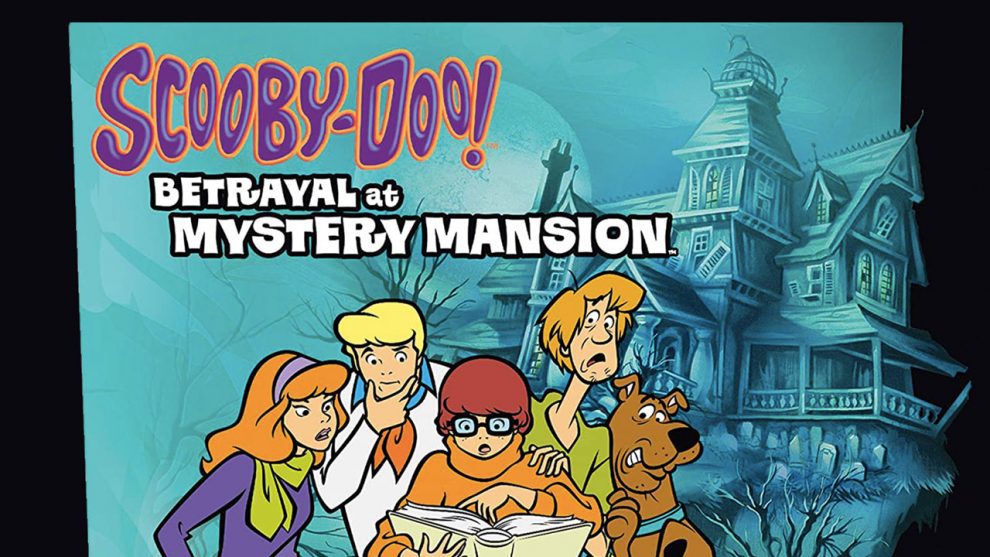




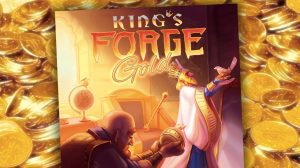




Add Comment